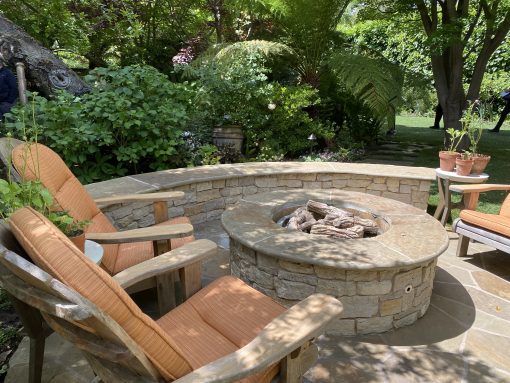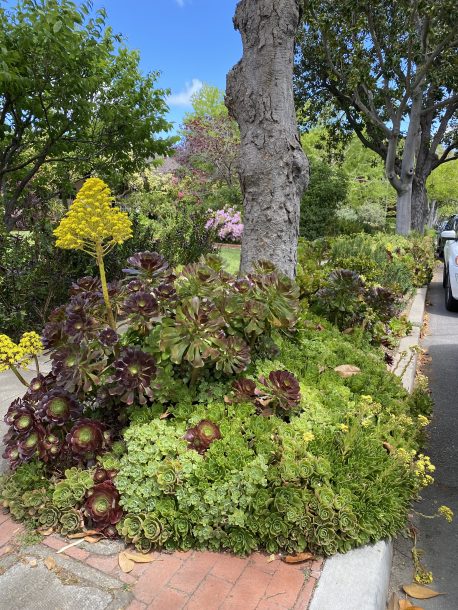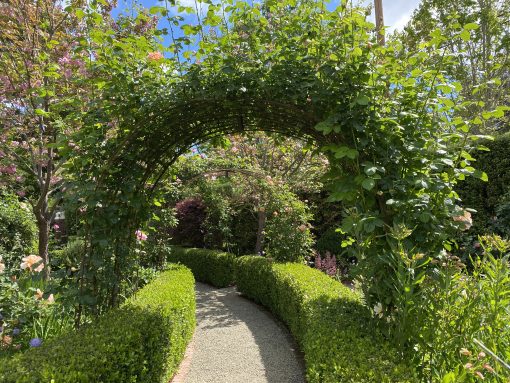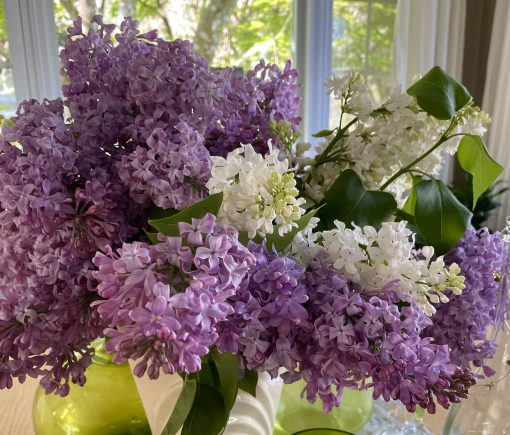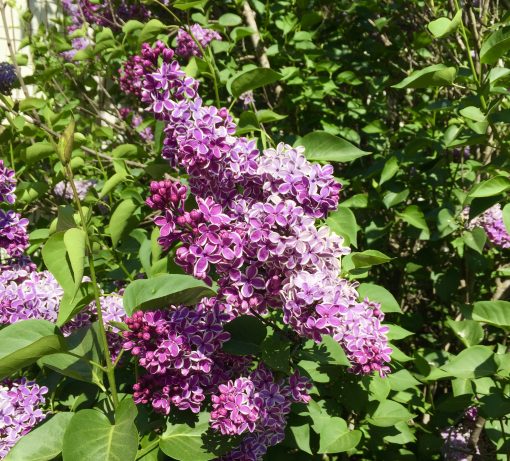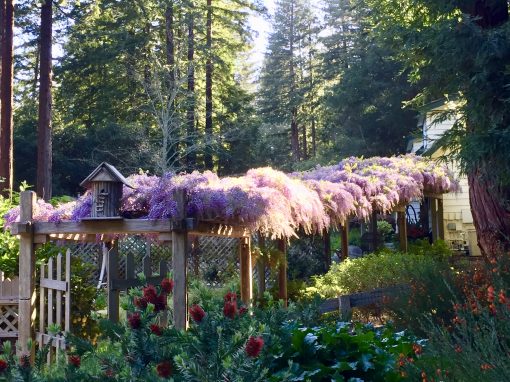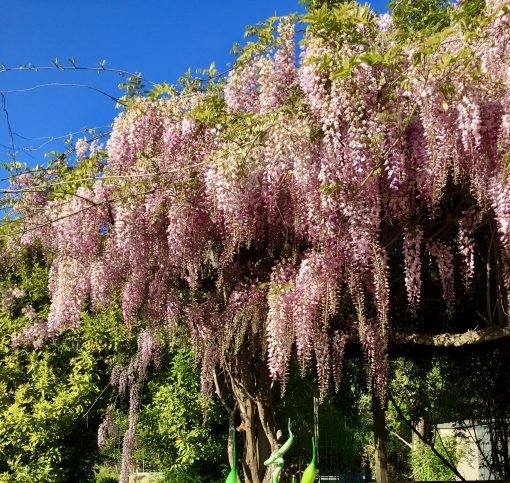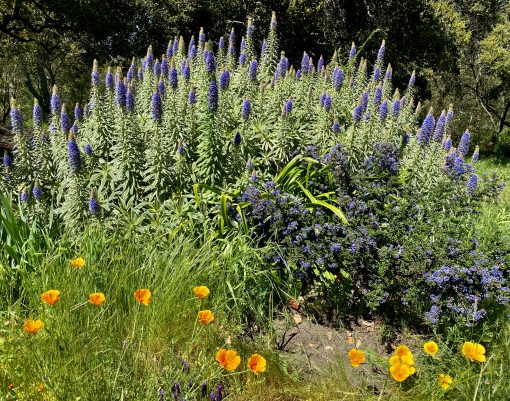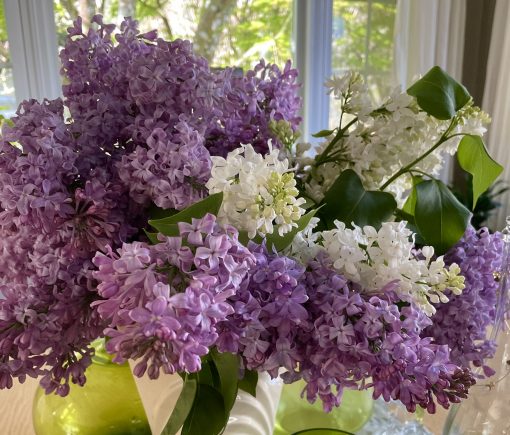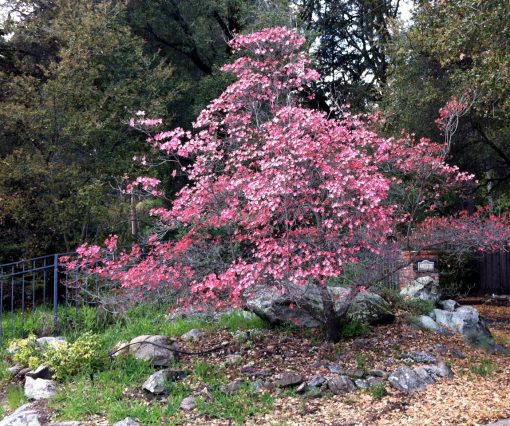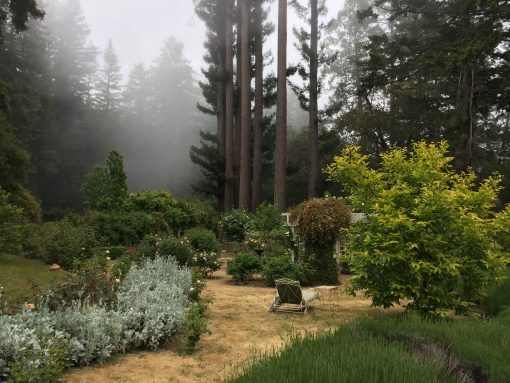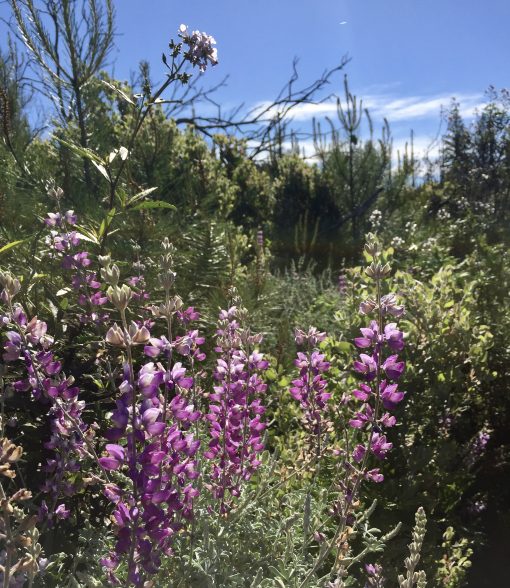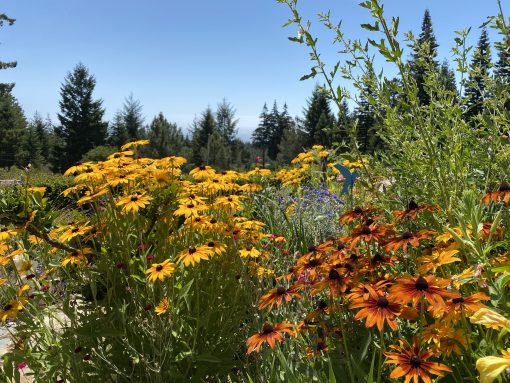
Mulch is not a very exciting subject but it sure is important to the health and productivity of your garden.
It’s great that everyone has accepted the value of covering the soil with organic mulch. Organic mulches- such as bark chips, treated sawdust, straw or even grass clippings keep plant roots cool, encourage earthworms and other beneficial organisms, conserve soil moisture, combat weed growth and protect the soil from erosion.
But is there an organic mulch that is better than another?
There are many types of mulch available. Nurseries sell different types of mulch in bags, building supply yards carry everything from bark nuggets in different sizes to treated sawdust to chipped wood and even shredded redwood bark. Shredded redwood bark, also called gorilla hair, does nothing for the health of your soil, however. If you have a very steep slope you may have to go with this type of mulch but that’s the only time I can recommend it. It will cling to a hillside without washing down in winter rains but treated sawdust would also work for this type of terrain and is much better for soil health.
Of all the types of organic mulches out there, recent studies have shown that ramial bark chips are one of the best mulches to improve soil health. Ramial chips come from trees and brush with branches up to about 3 inches in diameter- with or without leaves. These chips contain a high percentage of thin young bark and young wood. This is what makes them so valuable to the garden. Young wood is a trees factory for producing protein, glucose, fructose, lignin and polysaccharides. It’s an important source of nutrients for living things at all levels according to a study by soil scientists, G.Lemieux and R.A.Lapointe. You can obtain these kind of chips free from tree trimming companies who are probably working nearby chipping roadside brush for PG&E. Any disease in the chips doesn’t transfer to healthy plant roots, as long as you don’t dig the chips into the soil. You can also buy clean chips from landscape supply yards or in convenient bags from nurseries.
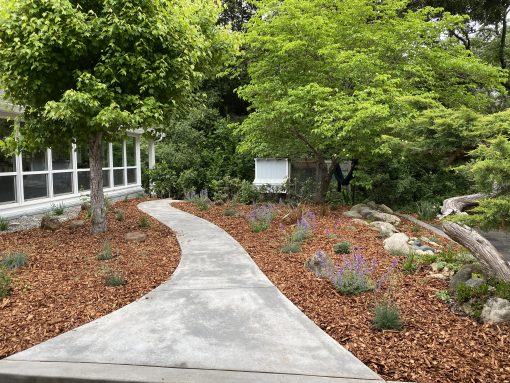
Make sure you get fresh mulch spread over your garden plants soon. It’s that time of year to mulch existing perennials, shrubs and trees.Besides the mulches mentioned above a little chicken manure is good worked into the veggie garden but composted horse manure works better as a mulch for the rest of the garden. Chicken manure is high in phosphates and too much can inhibit beneficial microbes in the soil. It also feeds the weeds. They love it. A better method would be to cover a layer of compost or composted horse or steer manure with a thick 4 inch layer of wood chips.
You’ll be amazed at the difference in your garden this season. A mulched garden is a happy garden. And if you have ivy, berries or vinca you want to eradicate, sheet mulching is the way to go. Next week I’ll go over the basics and share some success stories.

